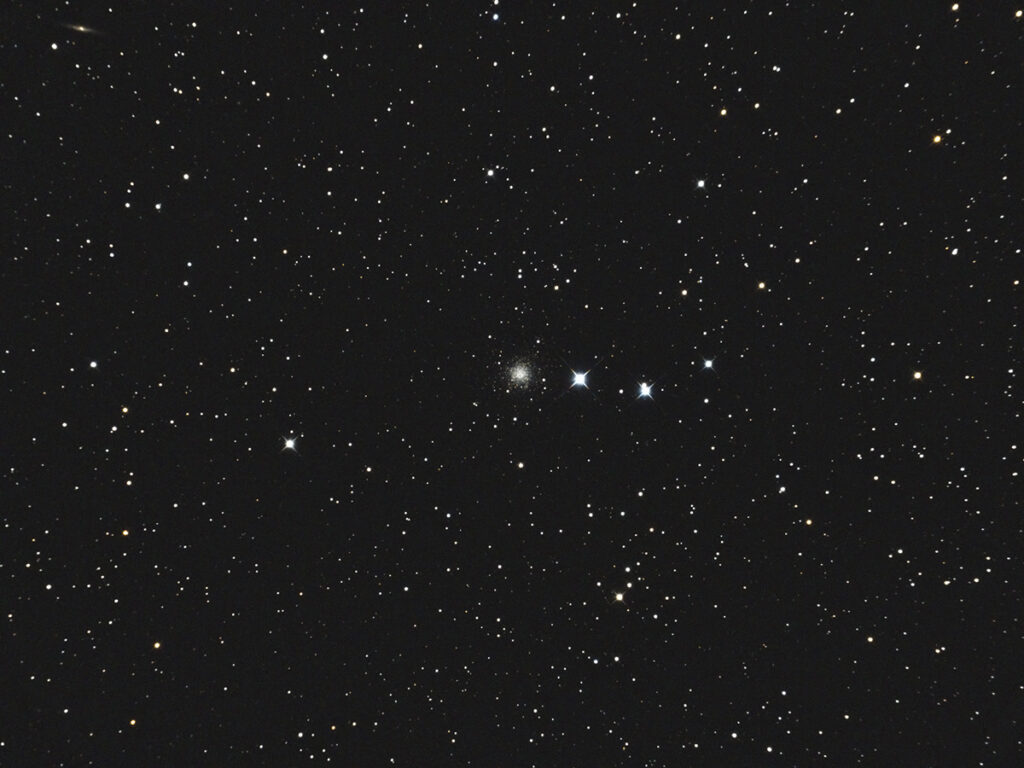
Telescope: Astro-Tech 8” f/8 Ritchey-Chretien, Orion Atlas EQ-G
Camera: QHY 367c Pro, -20C, Baader Mk III MPCC, GSO IR Blocking Filter
Guide scope: Astro-Tech 60mm, ZWO ASI120MM mini, PHD2
Exposure: 15x300sec, gain 2800, offset 50, saved as FITS, dithered every 2 images
Darks: 32, -20C, gain 2800, offset 50, saved as FITS
Flats: 64×0.3sec, Tee shirt flats taken at dusk
Average Light Pollution: Red zone, Bortle 8, fair transparency
Lensed Sky Quality Meter: 18.6
Stacking: Average, 1 sigma clip
White Balance: Nebulosity Automatic
Software: SharpCap Pro, Deep Sky Stacker, Nebulosity, Photoshop
NGC 2419 is one of the most remote globular clusters orbiting the Milky Way at a distance of 300,000 light years out in the fringes of the globular cluster halo, that’s nearly twice as far as the Large Magellanic cloud! At one time it was believed that NGC 2419 was not gravitationally bound to the Milky Way and was nicknamed the Intergalactic Wanderer, however it has since been shown to be a member of the Milky Way family. Its great distance and the interstellar dust between here and there contributes to the cluster’s beautiful soft color. Note the edge-on spiral galaxy NGC 2424 in the upper left corner of this field.
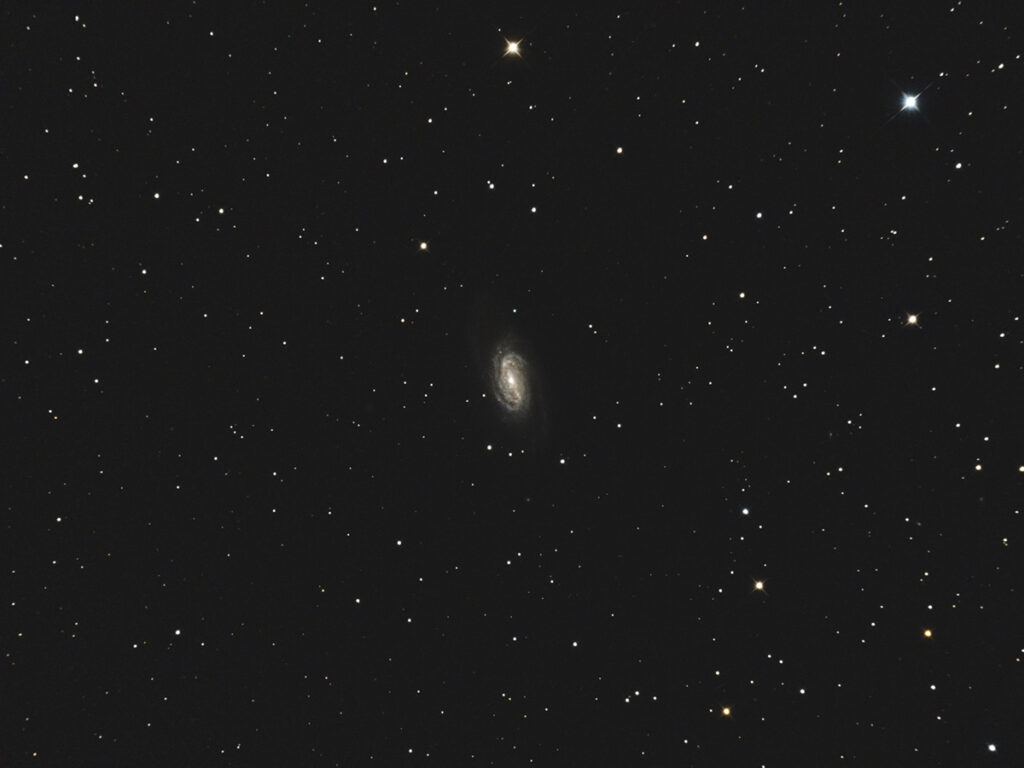
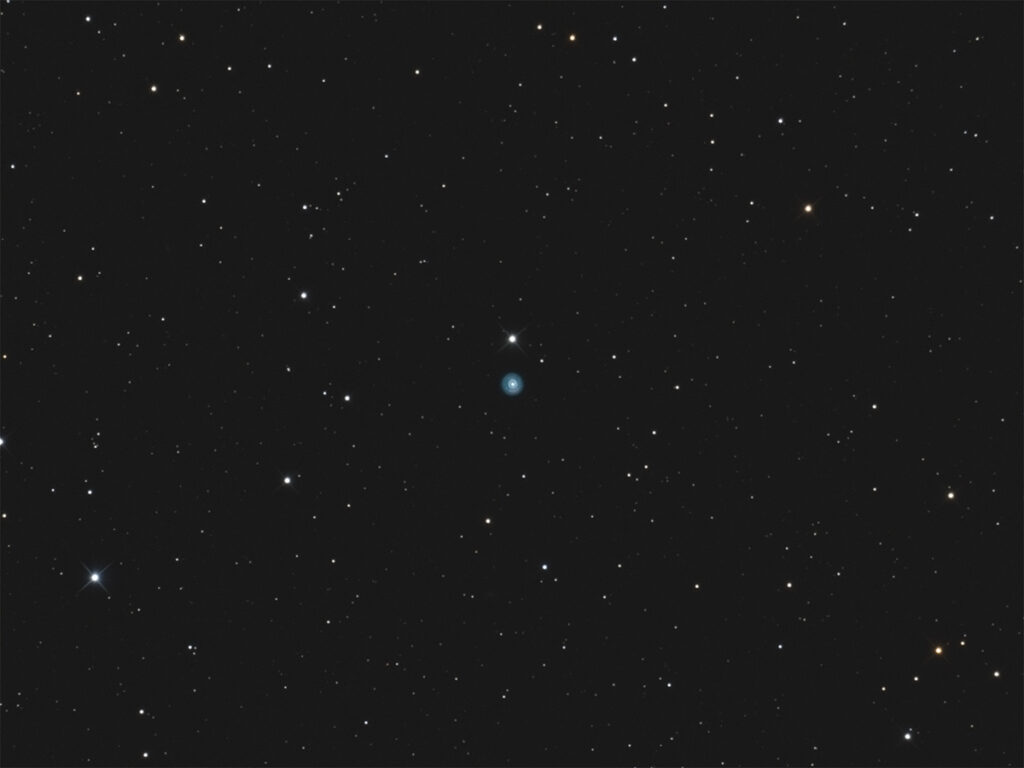
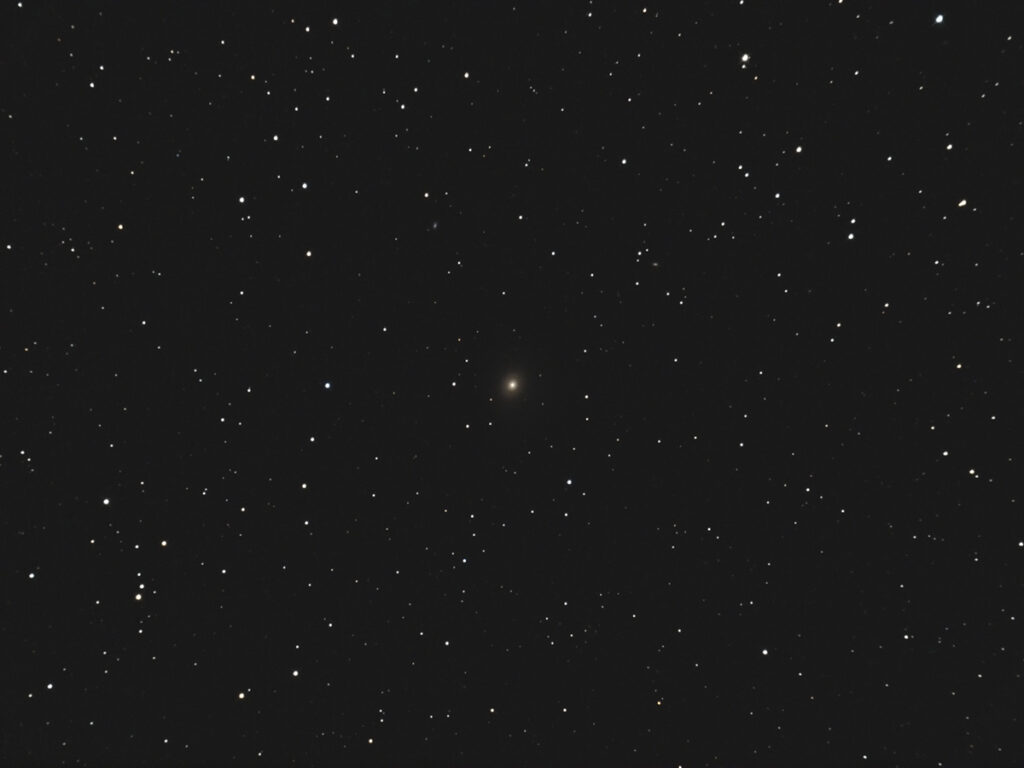
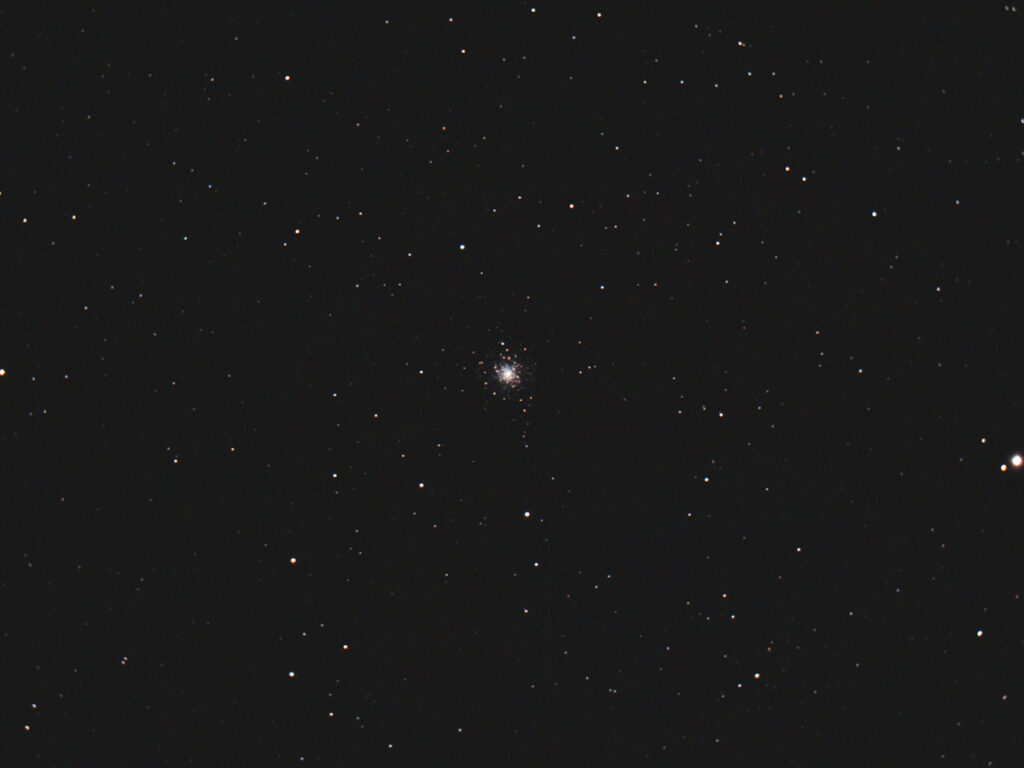
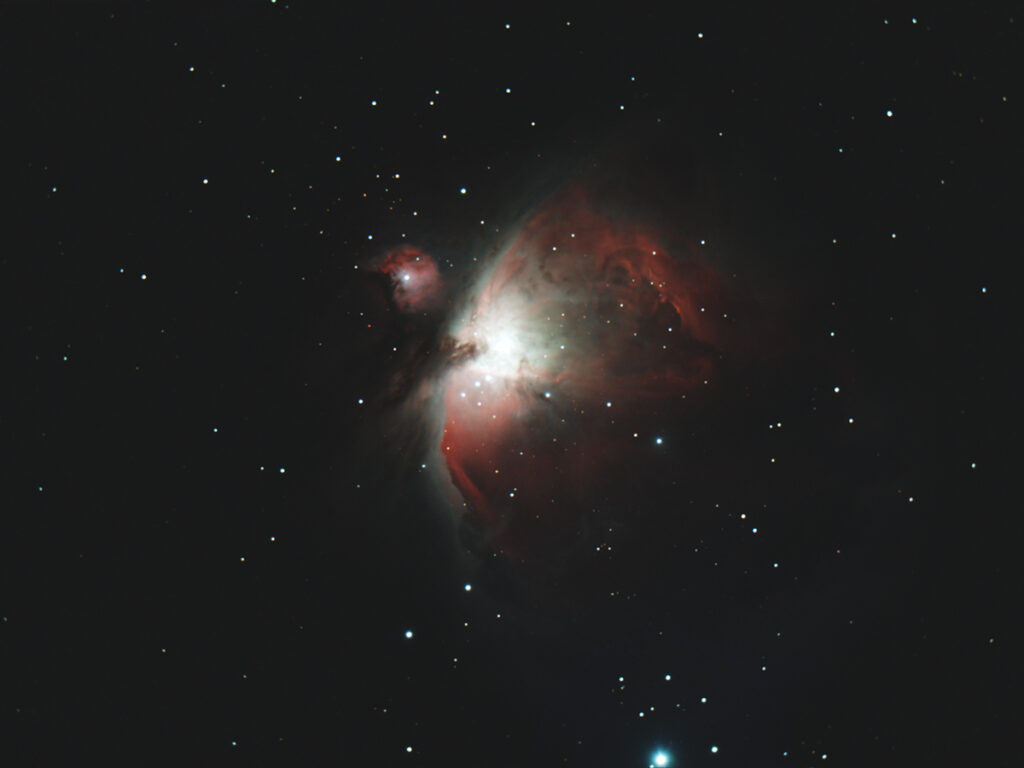
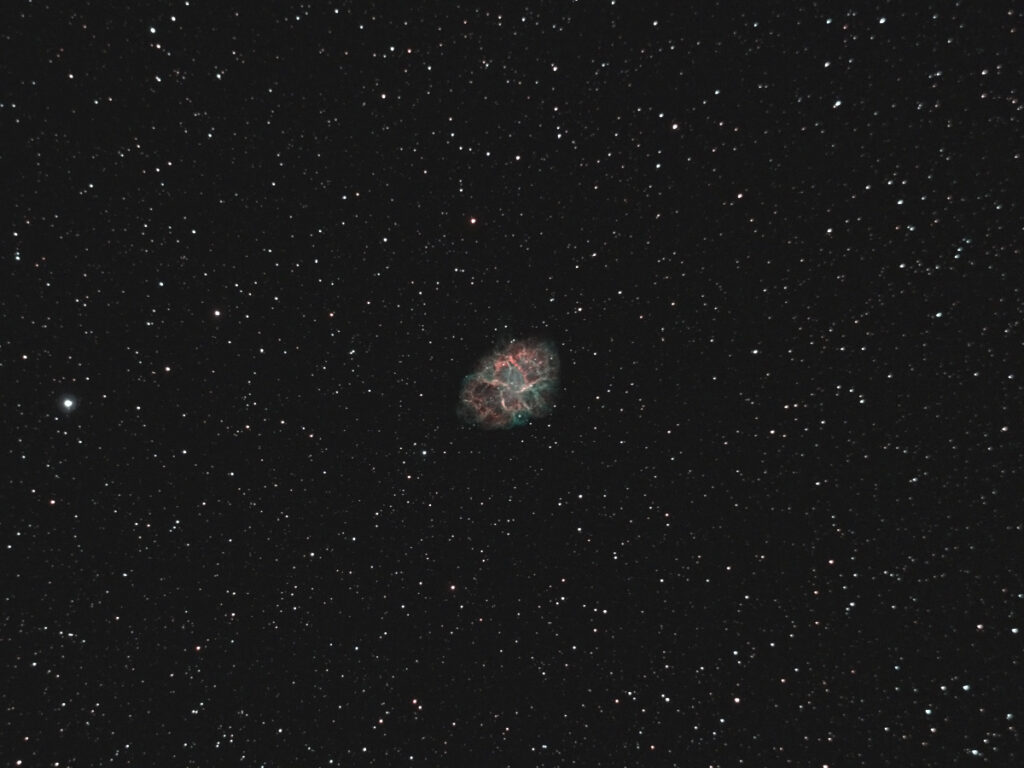
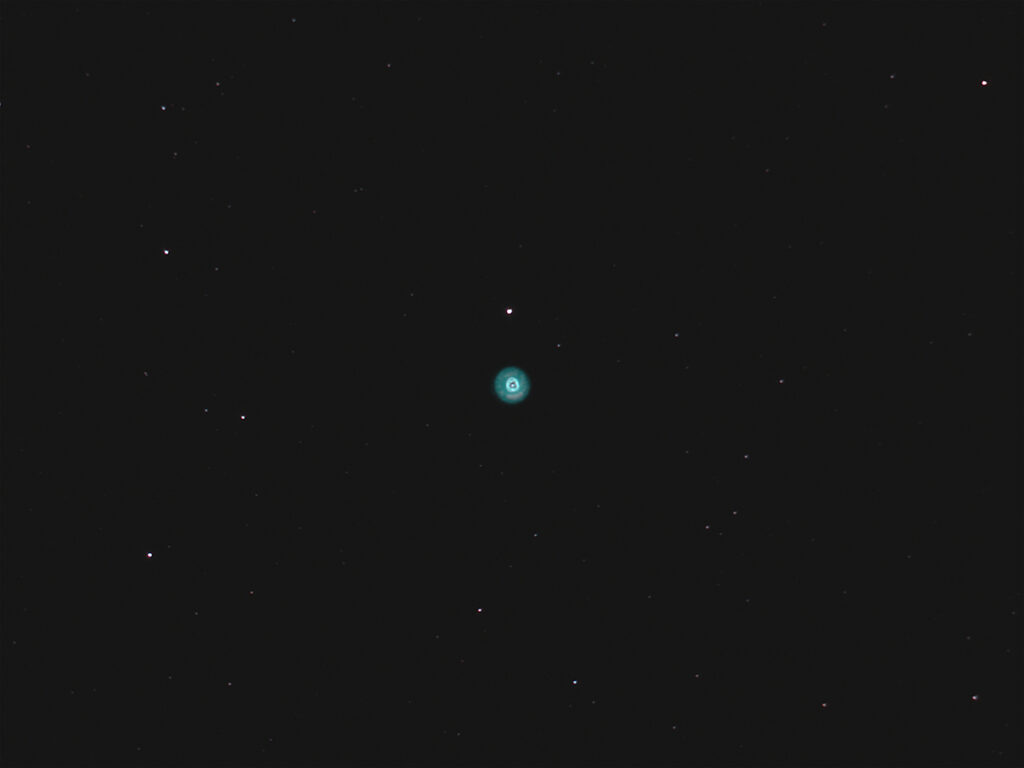
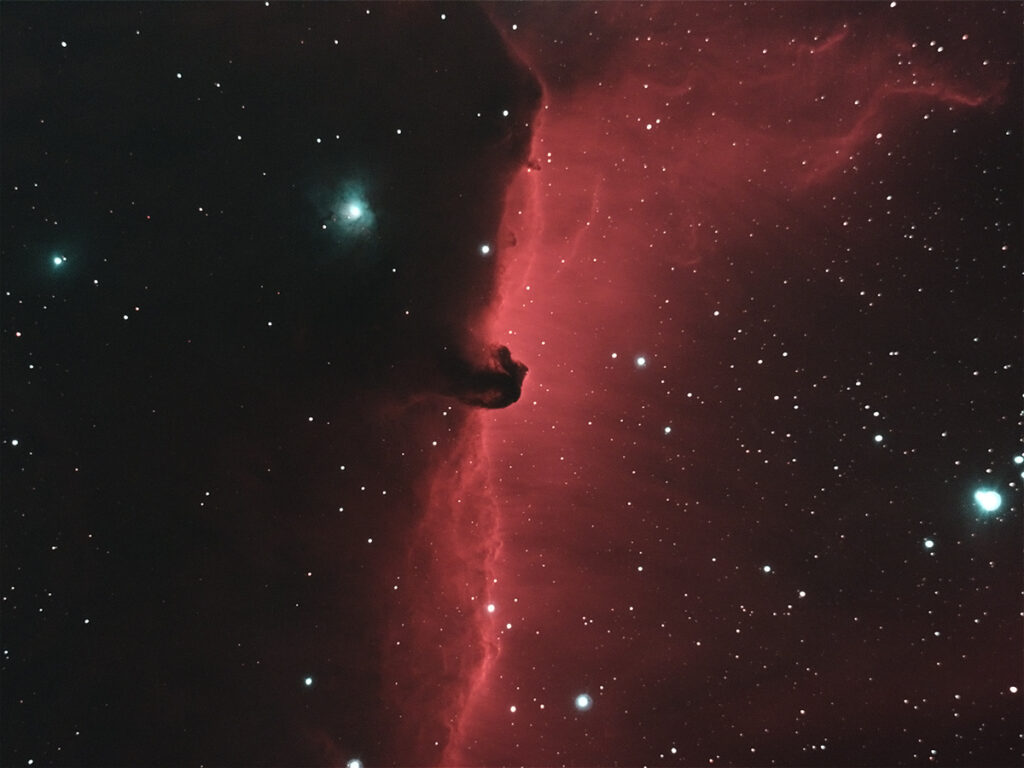
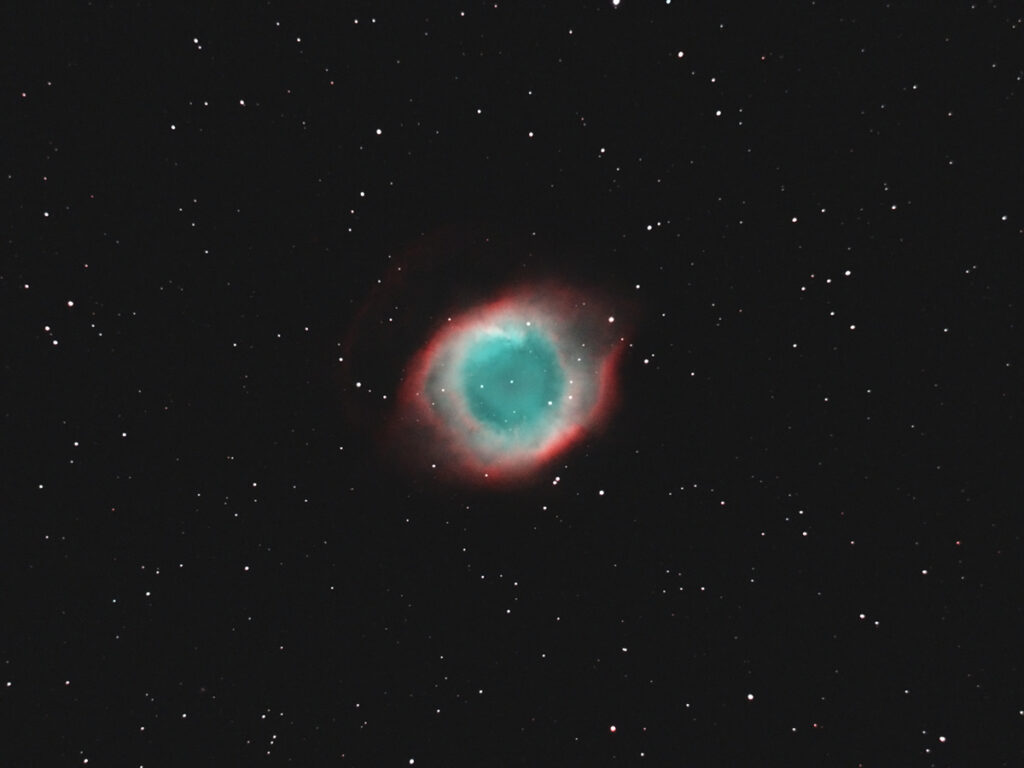
Recent Comments